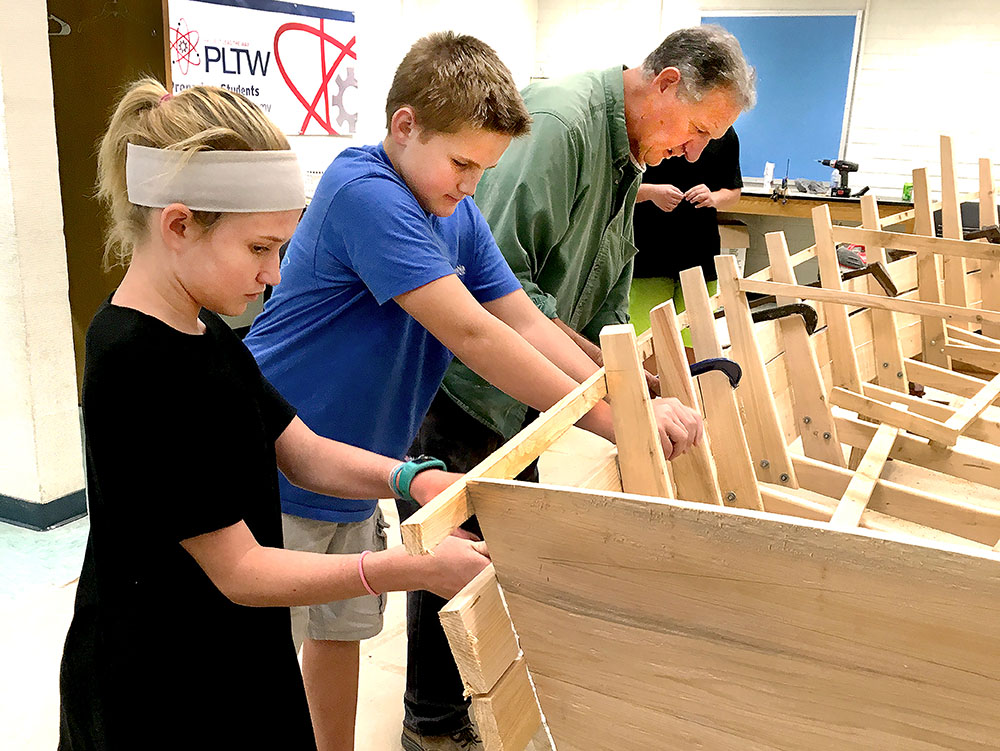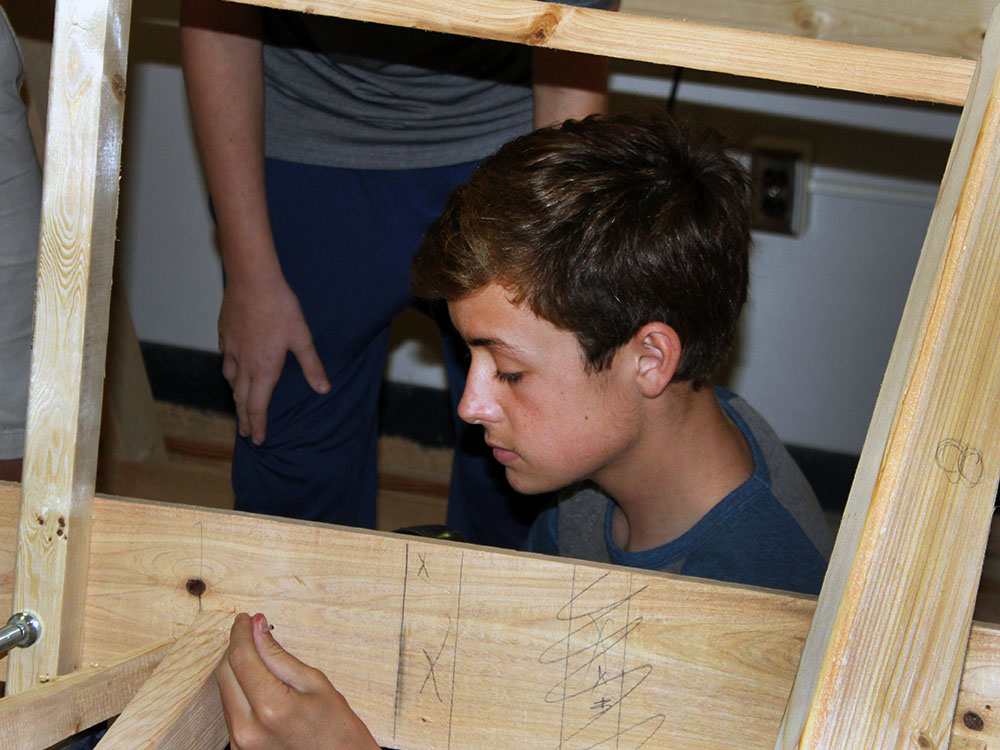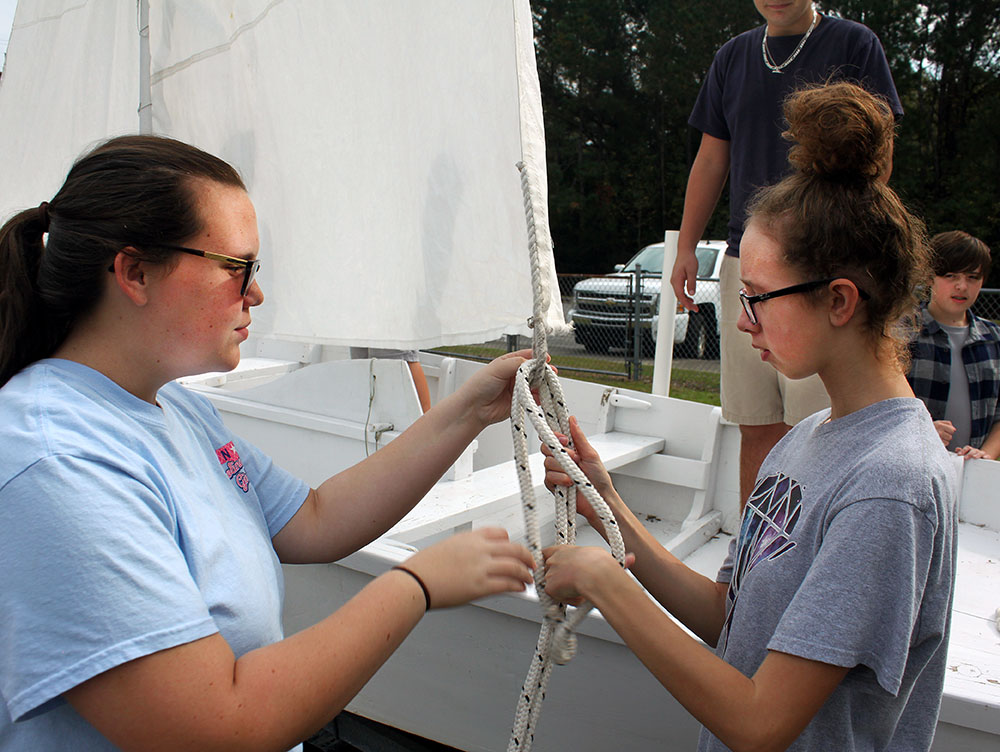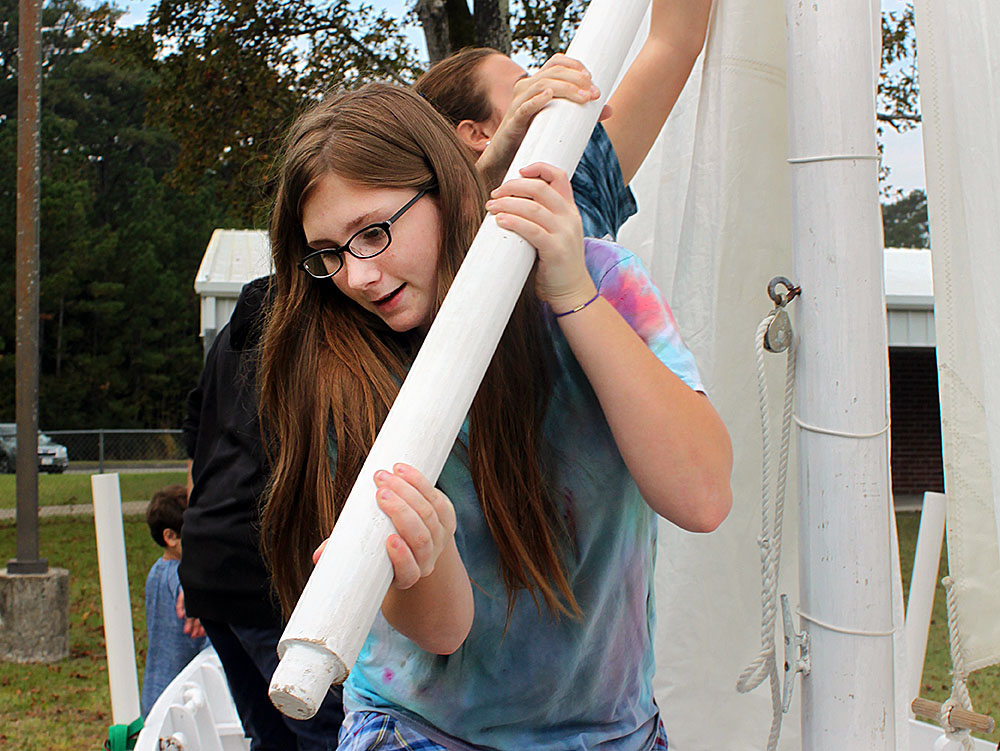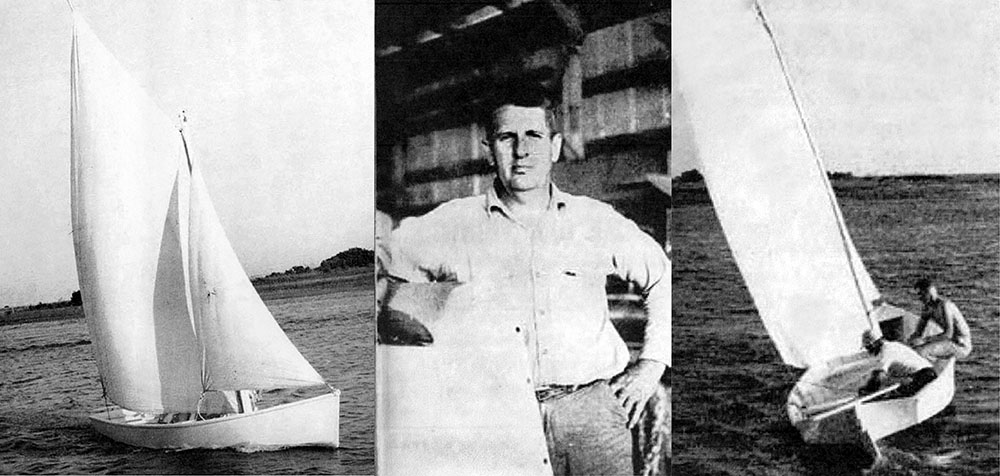It's Friday April 19, 2024
News From The Village Updated Almost Daily
December 1, 2017
Heber Guthrie is a fixture at the Oriental Boat Show. In the 3 day event, he builds a wooden skiff. Some years it’s a sailboat, others power. Heber is a traditional Harker’s Island “rack of the eye” boat builder. He uses no plans. He simply starts with a pile of wood and a boat emerges.These same traditional skills are now being added to a Middle School (6th – 8th grade) technology class. Heber is working with technology students at Down East Middle School in Smyrna (near Marshallberg) to build a 20 ft spritsail skiff. This was once a common vessel on Core Sound waters.
Richard Coffey, technology instructor, has teamed with Heber to create courses that likely are only taught at this school. Heber provided background information on Core Sound traditions for Coffey to include in studies that span 2 academic programs: PLTW (Project Lead the Way) and STEM (Science, Technology, Engineering, and Mathematics).
Heber Guthrie monitors students as they attach planking to the spritsail skiff.The students learn that skills practiced from generation to generation around Core Sound can have relevance in their engineering, design, automation, and robotics classes. Heber Guthrie’s rack of the eye techniques are examined in a way traditional builders would not have done. They use trigonometry.
Hand tools are preferred… here a miter box and hand saw.A sail for the spritsail skiff is generally rectangular. The top rear corner angles up and a pole called a sprit holds it up and out. A line attached to the lower rear corner of the sail and to the front top corner allows the sail to be pulled out of the way in just seconds. There is no boom. Because the hull has deadrise, the skiff plows through small waves with ease. With some degree of tuck in the hull, fishermen can haul a heavy catch without the stern sinking and impeding the boat’s speed.
Coffey said, “This project offers instruction in a number of skills, and it also connects Down East heritage to the PLTW curriculum. For example, beyond boat construction, they have investigated sailing techniques and have learned how to rig sails.”
Echoing Coffey, Heber said, “Students recognize how our traditional technologies in fishing and boatbuilding have a place in new technologies, and that these skills will be in demand for future occupations. This motivates students to appreciate their local heritage.” When the the construction phase of this project is completed, the students will learn to sail this juniper, strip-planked boat.
Marking placement of planks.Learning activities combine studies in core classes of math, science, language, and social studies. From a technology perspective, students learn linear and angular measurements, compositions of materials, and concepts of liquid and air movement. These skills are infused into classes that emphasize language arts, learning to listen, following instructions, and being a team member.
Framed by his work.Learning to rig a spritsail skiff.Handling the sprit.Spritsail skiffs were used for commercial fishing until skiffs were equipped with engines. This design has been substantially unchanged for a century and a half. Julian Guthrie, Heber’s uncle, is credited with reviving spritsails for recreational use in the mid 20th century. During that time, the magazine The State hailed Julian’s effort to keep this tradition alive. It noted that the spritsail rig is the oldest version of fore and aft sailing, dating back to 1425. Described as fast and seaworthy, they can be sailed, rowed, sculled, or poled.
In the mid 1950s, spritsail skiffs were revived by Julian Guthrie for recreational sailing.Heber is a member of the North Carolina Coastal Heritage Association, NCCHA.
For that Association, he leads a series of summer and weekend heritage boat building workshops. NCCHA’s president, Barbara Pearson, said, “Perhaps the most effective way to document and preserve the cultural heritage of North Carolina’s coastal communities is to motivate young people to understand how their past impacts their present and future. That’s why we are so enthusiastic about supporting Heber’s work at Down East Middle School.”
Many Down East students have lost after-school and summer jobs due to the decline in commercial fishing. Guthrie said, “I hope this project will help them find good things to do in free time. They should gain confidence in themselves, become self-motivated, and work independently in their spare time instead of adopting bad habits.”
Students will be working on the boat this weekend (Dec 1-3) at the Core Sound Waterfowl Museum in Harkers Island, as part of the Waterfowl Weekend. Heber Guthrie and Richard Coffey will be on hand along with their students to answer questions about their hand built creation.
